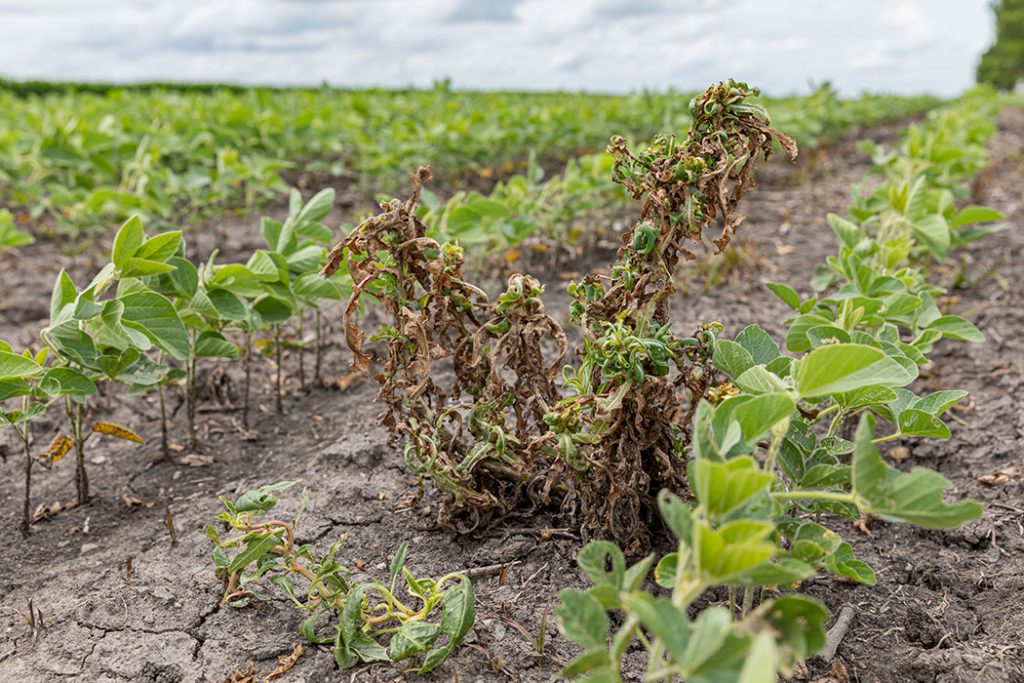Pesticide use: What is a herbicide?

This spring we are sharing the types of pesticides Ontario grain farmers can use. We are showcasing what insecticides and fungicides are and, today we are talking about herbicides! Glyphosate is probably the most famous herbicide, but there is a wide variety of organic and synthetic herbicides.
Weed control in crops is critical because weeds compete with crops for resources like sun, water, and nutrients in the soil. Every crop has its own “critical weed-free period” when it is absolutely crucial to control weeds. Yield losses due to weeds occur when the weed emerges before, or at the same time as, the crop. If the field has a high weed presence or if there is limited soil moisture, the weeds will compete with the crop. As anyone with a garden or a lawn can attest to, weeds are highly effective competitors.
Farmers reduce the likelihood of weeds emerging in their fields by tilling with a cultivator, rotating their crops, planning to plant at a higher density within the row or in tighter rows (so there’s less room for weeds to grow), and planting cover crops. Just like with insecticide and fungicide, farmers want to do everything they can to avoid having a weed problem in the first place, so they can avoid spending money and time using herbicide to manage it; however, nothing is fool-proof, and weeds do often emerge.
Weed problems are often persistent for several years, so farmers who had weed problems last summer will spray herbicide before the crop has even emerged, and again at different stages of the crop’s growth. Timing is important, too: if the herbicide is applied too early or late, it can damage the crop. It’s an oversimplification, but herbicides are effective against weeds because they kill plants – and crops are plants, too. Farmers track their herbicide use carefully, and they rotate which ingredients they use frequently. If the same active ingredient is used too often, weeds can become resistant to it.
Herbicides are complicated to use, so it takes an experienced farmer (and often the help of an agronomist or Certified Crop Advisor) to make decisions about what product to use on what crop, at the correct rate, and when.
